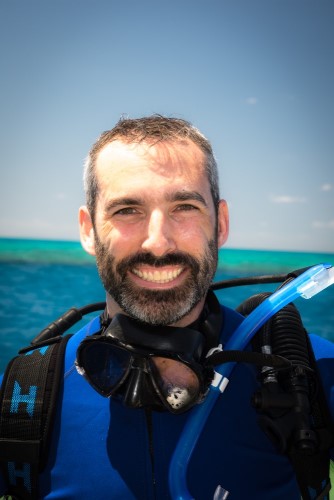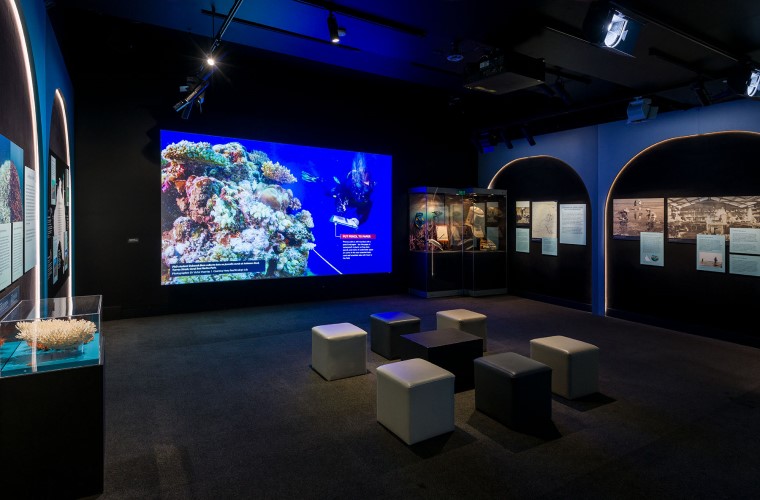Dr Peter Cowman, Careers in Coral Reef Science, Queensland Museum Network, 4 May 2023
Written by Dr Peter Cowman, Principal Scientist and Curator, Biosystematics

“I always wanted to be a marine biologist!” is the refrain I get when I tell people I am one. But like most career paths, there is more to it than people think.
‘Marine biologist’ sounds like a career that involves visiting exotic places, scuba-diving every day, and seeing amazing underwater animals. But marine biology in the 21st century is very different from the stereotype of a pioneering scuba diver exploring the underwater realm. For those of us marine biologists that study coral reefs, we have become climatologists, data scientists, conservationists, and advocates for our endangered reefs. We can wear many different hats.
Seeing the Great Barrier Reef for the first time
For myself, I was trained as a marine scientist at the National University of Ireland in Galway – not a location that makes you think of tropical coral reefs! My studies, and that of most marine biologists, included the amazing coral reefs of Australia, the most famous being the Great Barrier Reef off the Queensland Coast. My first dive on the Great Barrier Reef was in 2007, during my master’s degree at James Cook University in Townsville. This was the first time I saw the corals and fishes that I had only studied in textbooks in the rainy west of Ireland. It was the moment that sealed my fate as a marine biologist.


Diving into DNA
While I take every opportunity to see the Great Barrier Reef, scuba diving is not my primary activity as a marine biologist. As Principal Scientist and Curator of Biosystematics, I dive into the DNA of coral reef organisms. I am a bioinformatician (like a magician for biological data), using many different computer programs to analyse and discover patterns in genetic and biological data. I am still a marine biologist, but I have a particular set of skills that I use to study marine habitats and the animals that live there.
Making Waves: A Century of Australian Coral Reef Science
At Queensland Museum, I also wear the hat of curator – I curate information and objects for interesting and engaging exhibitions for the public. Most recently, I was the lead curator for the exhibition, Making Waves: A Century of Australian Coral Reef Science which manages to squeeze 100 years of Australia’s reef science history into 52 square metres.
The exhibition follows the Australian Coral Reef Society (ACRS) which is the oldest society dedicated to the study and conservation of coral reefs. From its founding in 1922, to the first Great Barrier Reef expedition in 1928; its work in establishing dedicated research stations, the Great Barrier Reef Marine Park Authority and the Australian Institute of Marine Science (AIMS); ACRS and its membership have evolved to support Australian coral reef research and continues to advocate for the protection of our remarkable coral reefs.

Science fiction becoming science future
The best thing about my job and the research I do is that I get to see new technologies being used to study marine biodiversity, things that were once only thought of in science fiction shows like Star Trek (of course I am a Trekkie). As part of my work on coral genetics at Queensland Museum, I use a new device called a “MinIon” from the company Oxford Nanopore – as close to a Star Trek tricorder I can get. Smaller than a mobile phone, this device lets me sequence the DNA of a coral or a reef fish in real-time, getting up to a complete genome in a couple of days. Impressive when you think the first human genome took 13 years!
Keep up to date with the latest coral molecular research at Queensland Museum Network with Project DIG Coral Bank.

